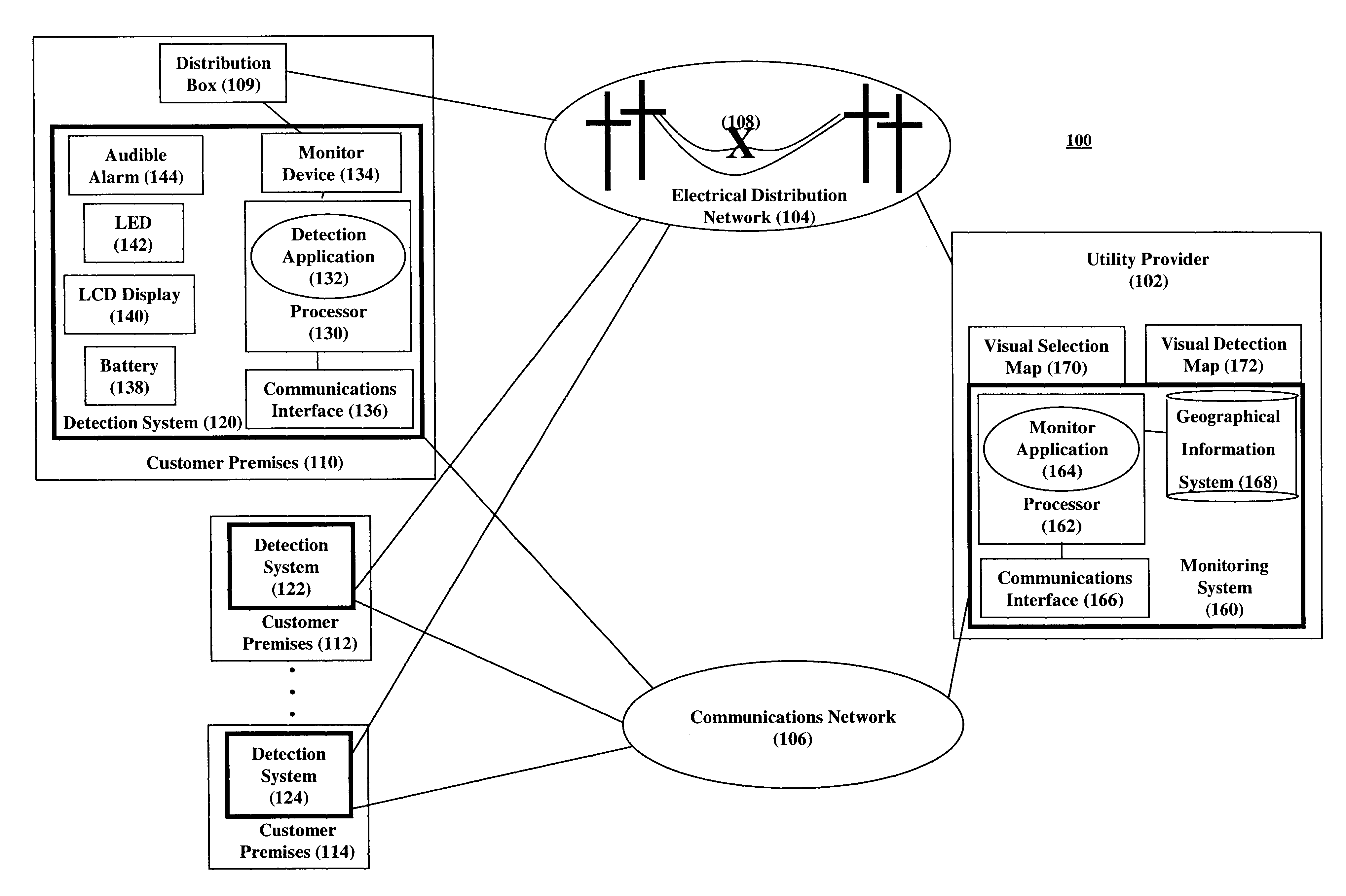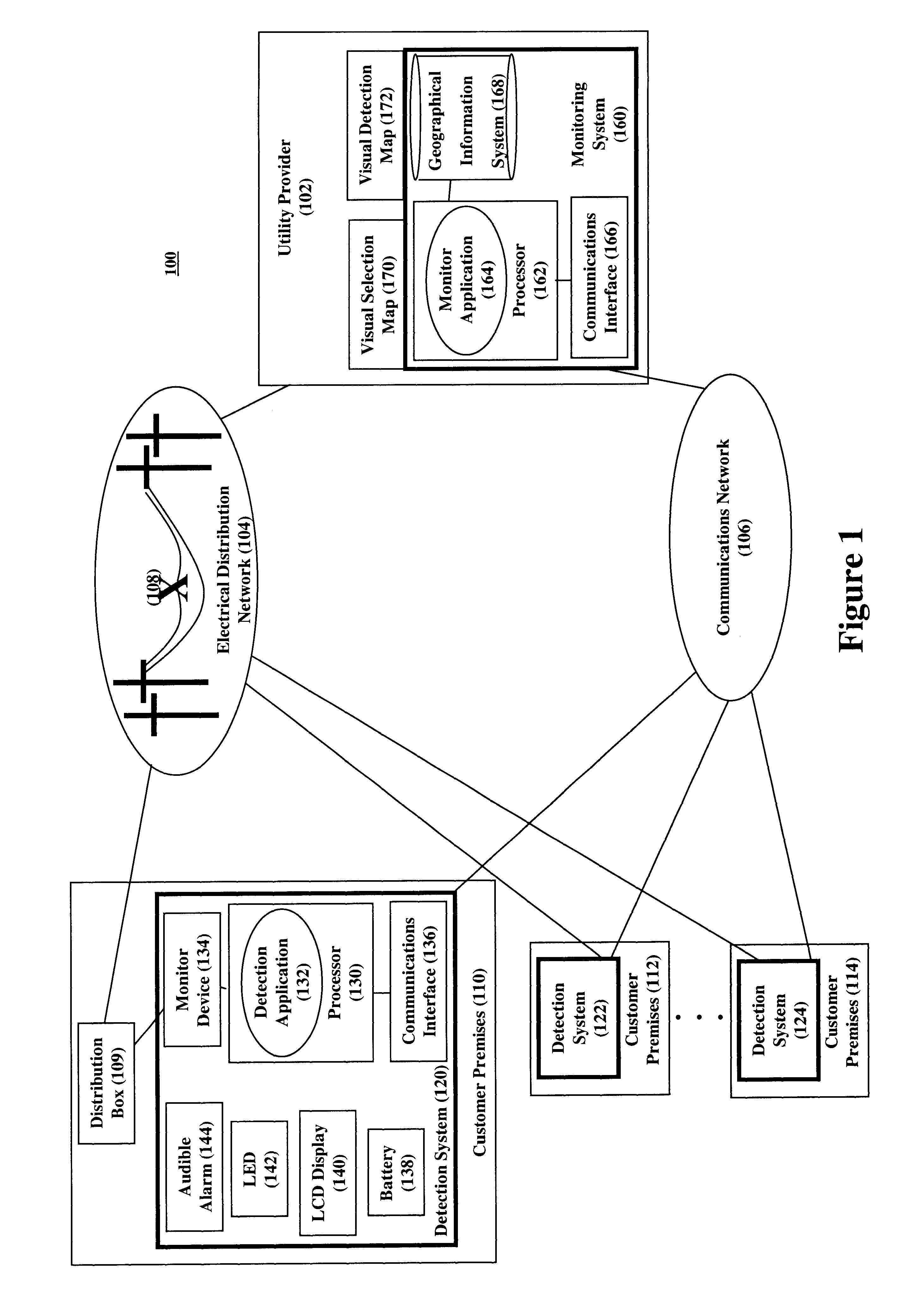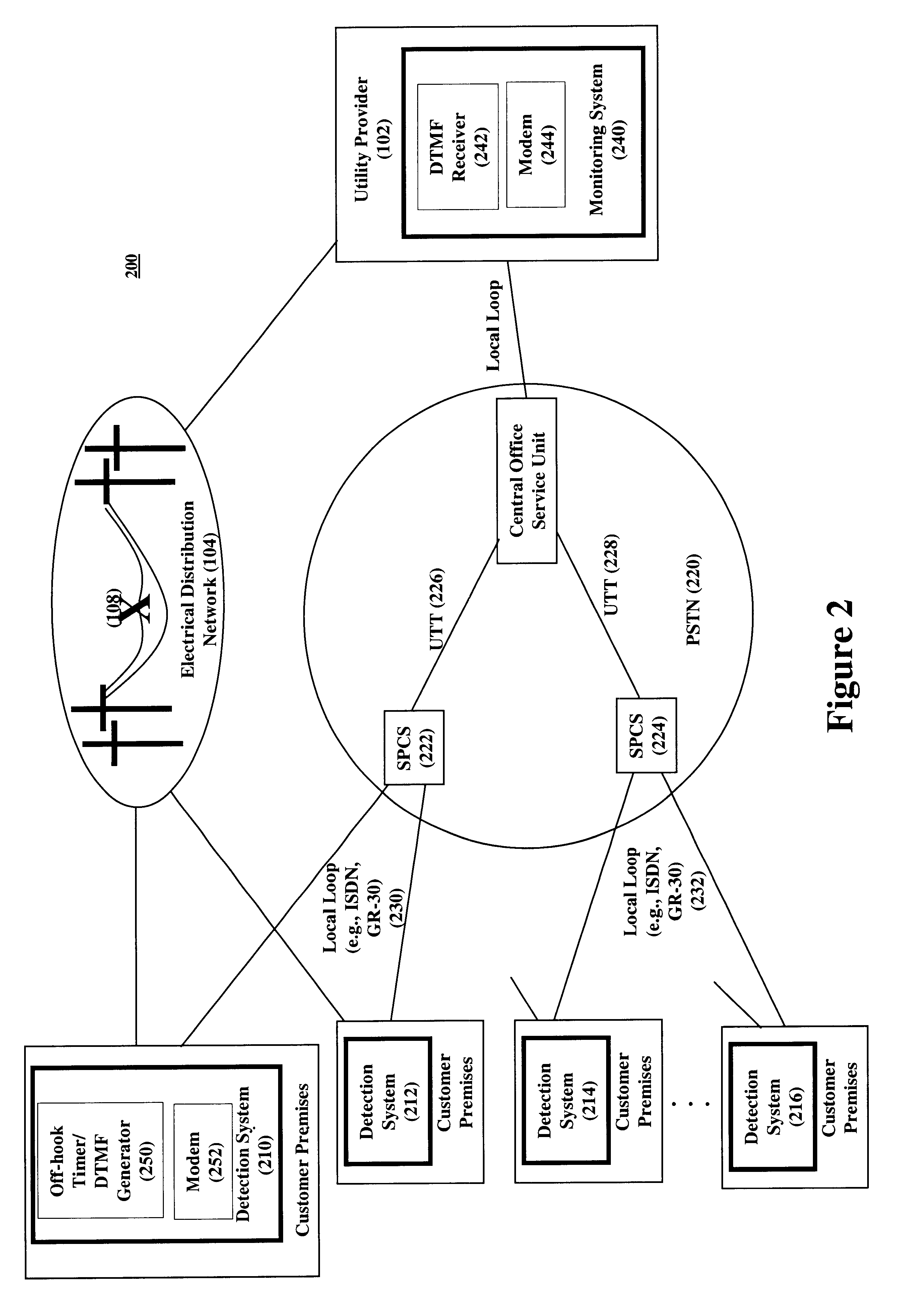System and method for surveying utility outages
a utility and surveying technology, applied in non-electric variable control, process and machine control, instruments, etc., can solve the problems of utility providers not being able to quickly and easily detect and locate service outages, affecting electrical and telephony services, and utility lines being downed, so as to reduce the number of service calls and improve customer satisfaction
- Summary
- Abstract
- Description
- Claims
- Application Information
AI Technical Summary
Benefits of technology
Problems solved by technology
Method used
Image
Examples
first embodiment
Reference will now be made to three specific communication networks over which our invention can be implemented. Again, the exact form of the communications network is not critical to our invention and one skilled in the art can readily implement our invention over different networks. FIG. 2 shows a first embodiment where the monitoring system communicates with the detection systems through PSTN 220, specifically, using the Utility Telemetry System (UTS). Here, PSTN addresses are assigned to the monitoring system and detection systems, which addresses are used to identify the systems and to establish connections. Under UTS, the monitoring system uses utility telemetry trunks (UTT) 226-228 to establish connections to stored program control switching systems (SPCS) 222-224 that serve the detection systems 210-216. Preferably, although not required, the SPCS's establish connections over the local loop 230-232 to the detection systems without using power-ringing (i.e., suppressed power ...
second embodiment
FIG. 3 shows a second embodiment where the monitoring system communicates with the detection systems through PSTN 320 as described in U.S. patent application Ser. No. 09 / 626,437 by Stanley Pietrowicz, filed Jul. 27, 2000. Under this communications method, a packet network 322, such as the CCS / SS7 signaling network, is used to convey the query, response, alerting, configuration, and status messages between the monitoring system 340 and detection systems 310-316. Similarly, the detection systems can establish, as an example, a separate modem connection through the transport network 324 to the monitoring system in order to send the status and response messages.
third embodiment
FIG. 4 shows a third embodiment where the monitoring system 440 communicates with the detection systems 410-416 through a packet network 422, such as that provided by an Internet service provider (ISP) and the Internet. Under this embodiment, the detection systems must have an "always-on" connection to the packet network, such as is provided by cable modem and xDSL modem access. Here, IP addresses can be assigned to the monitoring and detection systems, which addresses are used to identify the systems and to establish communications. All messages, for example, can be transmitted through the UDP protocol.
Although described with respect to electric utility providers, our invention is readily applicable to other applications. For example, if the communications network is other than the PSTN, the detection systems can monitor the presence / absence of telephony service and assist telephony service providers in detecting and locating telephony outages. Similarly, the system can monitor the...
PUM
 Login to View More
Login to View More Abstract
Description
Claims
Application Information
 Login to View More
Login to View More - R&D
- Intellectual Property
- Life Sciences
- Materials
- Tech Scout
- Unparalleled Data Quality
- Higher Quality Content
- 60% Fewer Hallucinations
Browse by: Latest US Patents, China's latest patents, Technical Efficacy Thesaurus, Application Domain, Technology Topic, Popular Technical Reports.
© 2025 PatSnap. All rights reserved.Legal|Privacy policy|Modern Slavery Act Transparency Statement|Sitemap|About US| Contact US: help@patsnap.com



